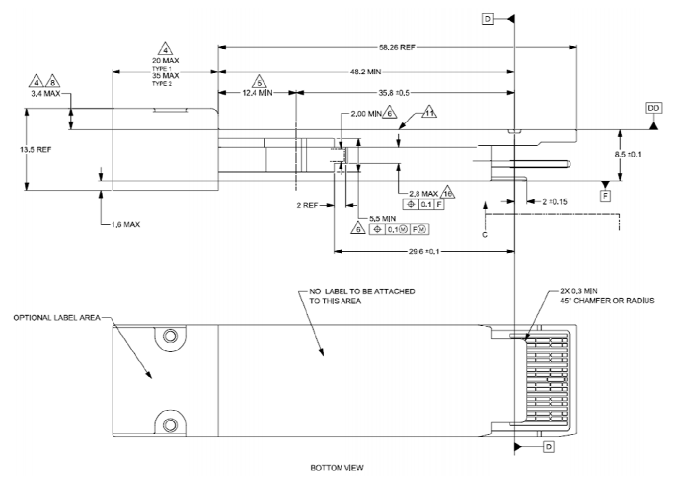
The QSFP-DD800 MSA is focused on the next generation of the QSFP family of modules. The new QSFPDD800 1.0 specification is intended to be incremental to the existing QSFP-DD 5.0 specification. As signal integrity and thermal performance remain imperative, the transceiver pads have been optimized to improve signal integrity for 100 Gbps performance per lane without affecting backwards compatibility.The new specification additionally defines a novel 2×1 connector/cage, with cabled upper ports as an option to address signal loss issues associated with tradition PCBs. Looking ahead, QSFP-DD800 promoters will continue to work on new connector/cage variants, including 2×1 SMT versions that operate at 100 Gbps per lane.
“In the short time our group has collaborated, we are thrilled to introduce this first specification for the next generation of the QSFP family of modules,” said Scott Sommers, co-chair of the QSFP-DD800 MSA.“As signal integrity and thermal management remain challenges for the optical communications industry, our MSA group is confident that its solutions will meet performance needs.”

“With their superior system integration and design flexibility, QSFP modules continue to be the cornerstone in building next generation networks and network equipment, especially as port speeds increase to 800G,” said Mark Nowell, co-chair of the QSFP-DD800 MSA. “Furthermore, their ability to increase switch and routing bandwidth density without sacrificing backwards compatibility with QSFPDD,QSFP56 and QSFP28 modules provide network operators tremendous commercial and operational advantages.”
The QSFP-DD800 MSA group is also announcing that it will act as an incubator, collaborating with the QSFP-DD MSA, to provide specifications to that group with the intention of it being included within the QSFP-DD specifications. Therefore, companies interested in joining and participating in QSFP-DD800 development are encouraged to join the QSFP-DD MSA.



